
By the Numbers: The Math of Beauty
March 3, 2021
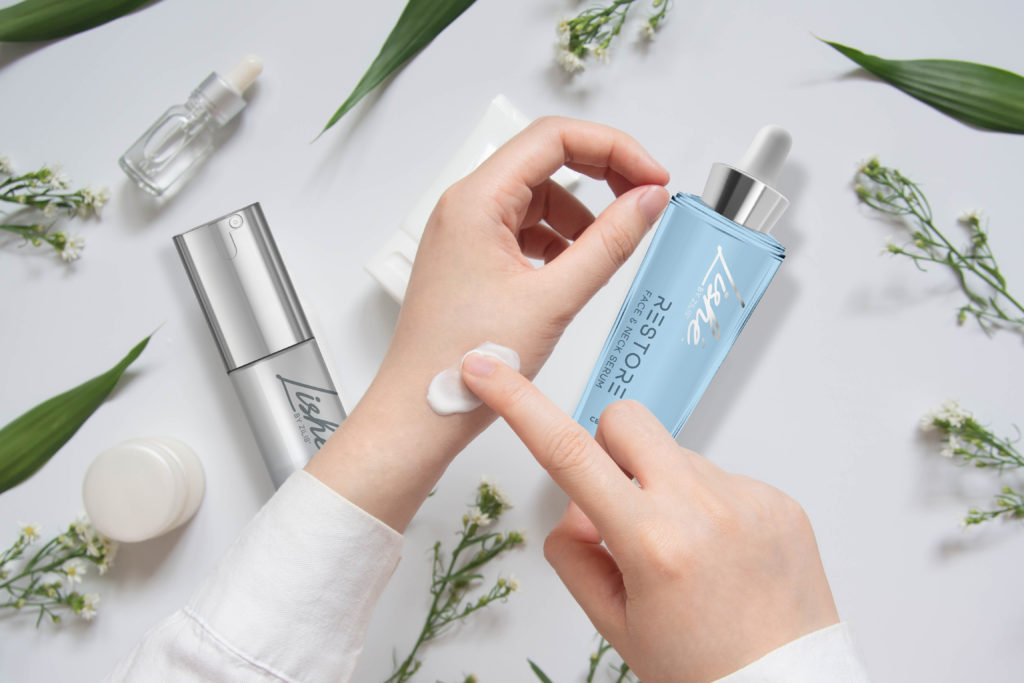
Our Director of Finance, Jason Leach is closing out our round of skincare education. Let’s take a look at the U.S. skincare market and find out what’s driving the trends sky high!
In the last two pieces of “By the Numbers”, we looked at how the 2018 Farm Bill catapulted hemp-based phytocannabinoids (CBD, CBG, CBC, CBN, CBDV, etc.) into the mainstream in a once-in-a-generation birth of a new industry. We detailed how the rise of CBD, and other hemp-based products, is a structural (or permanent) change to our economy. In spite of the pandemic, the U.S. CBD market is estimated to have grown double-digits in 2021 (~14%), approaching $5 billion at year end.1 And, Brightfield expects the CBD market to grow another 3-fold through 2025, driven predominately by increased knowledge and adoption of hemp-based phytocannabinoids for personal care and wellness.
With respect to the COVID-19 pandemic, we discussed how the virus:
- accelerated existing trends of increased online, director to consumer, and subscription-based purchases – the “Amazon Effect” – 2/3 of CBD purchases may have moved online in 2020;
- has put in stark relief a decades-long “slow pandemic” of age and lifestyle conditions – a multi-trillion-dollar opportunity for wealth transfer from traditional health care systems back to the people;
- and was therefore, a wakeup call that we are largely personally responsible for improving our health and productivity, and by extension our communities and nations (70% of health savings are projected to be preventive).
The way I like to put it is there is a reorganization, or re-orienting, of thinking going on. It is not temporary, but structural and permanent, and vector-like. That is to say, the rise in CBD and self-care is not a fashion or fad but a change in how we live for the long term. Where lifestyles had been on certain vectors for decades, the rise in the use of CBD and the impact of the pandemic have changed those vectors like a slapshot hockey puck banking off the boards! We are taking control of our health and wealth, and indeed our numbers, by hopefully skating to where the puck is going – total body wellness.

Within this structural transformation, we touched on the skin care market and the rise of CBD, alongside plant-based, sustainability and organic trends. The worldwide skin care market is currently estimated at $148 billion and is expected to grow to approximately $190 billion in 2025, or roughly 63% growth over ten years—25% alone from 2020 to 2025.2 The nascent hemp-based CBD skin care market is forecast to have grown anywhere from 17-30% in 2020 (remarkable given the circumstances) and is expected to tack on additional 33% per year through 2024.3,4,5,6 Of note, CBD is the most sought-after new ingredient in the massive, fast growing skin care industry7 with consumers seeking the known benefits of CBD on the skin.
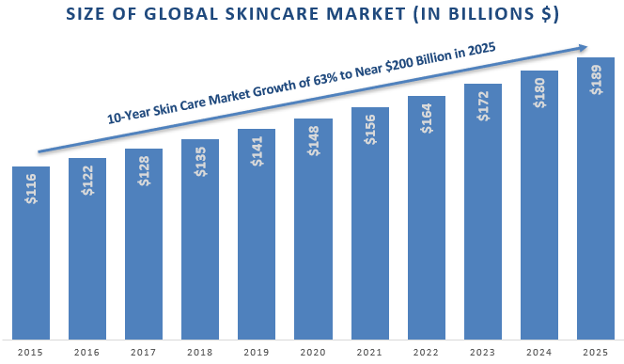
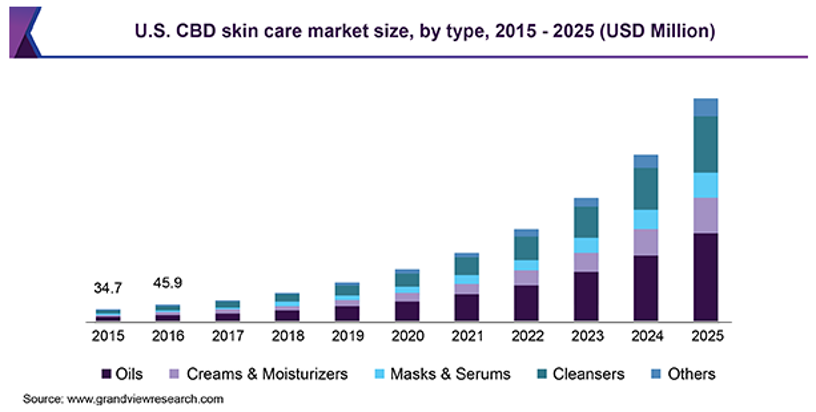
After nearly a year of stay at home orders, masks and Zoom Meetings, there has not only been an increased focus on what we order online to put in our bodies to promote overall wellness, but on how we maintain and improve the health of our skin, and indeed our vanity. California plastic surgeon Dr. Scott Miller detailed in September 2020 how patients bring him screenshots of their Zoom calls, surmising,
“Working from home, being seen a lot (and seeing themselves) via company video conferences, and having mask-wearing bring increased focus to certain facial features, I think a lot of people have had a tremendous amount of time to be supercritical of themselves. They pick up on things they want to improve about their appearance.” 8
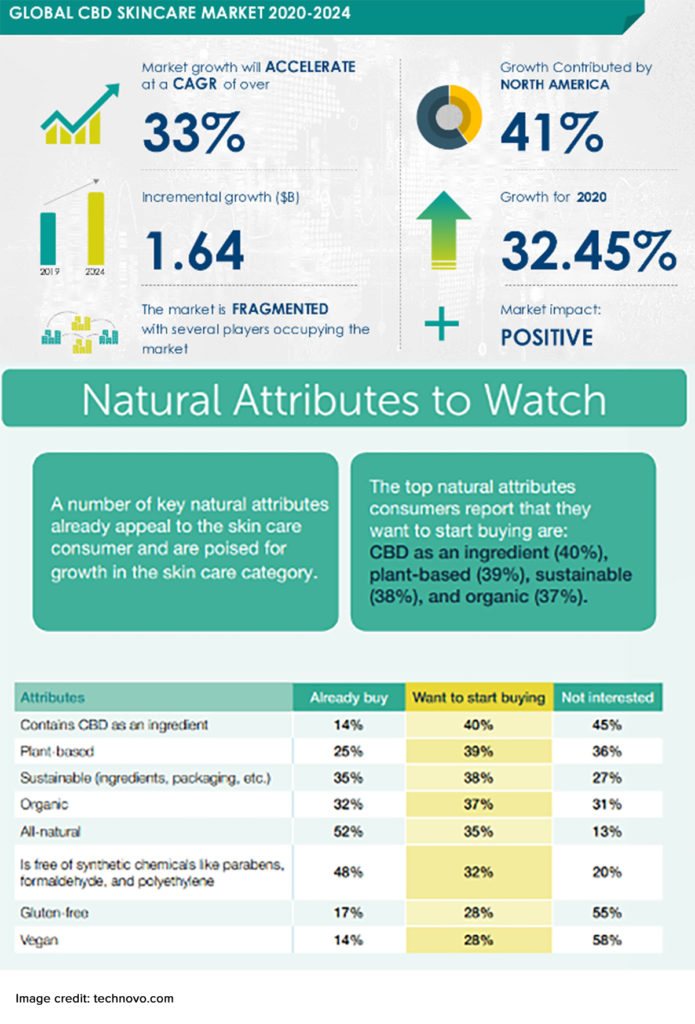
Dr. Michelle De Souza, a plastic surgeon for the University of Kansas Health System put it this way, “When there’s a thumbnail version of you on screen, it’s really hard not to look at it and start critiquing your face.9
Whether health, vanity, or both, Google searches for skin care products such as face serum, moisturizer, eye cream and cleanser have increased dramatically since February 2020 across the world. The increase in online search for skin care has persisted into 2021 with January Google search trends for moisturizer and eye cream at their highest monthly levels on record, and face serum at its second highest month on record. All four Google Trends going back to 2004 are listed but abbreviated below.

As shown in the mirroring spikes and consistently high search results for multiple skin care products, it appears consumers are in search of an all-encompassing skin care regimen. Searches for “Best Skin Care Routine” have doubled pre-pandemic levels and have maintained a very high level into 2021. Corroborating this trend, the NPD Group’s 2020 Women’s Facial Skin Care Consumer Report found that during the pandemic:
- 40% of facial skin care users reported using their products more often;
- 22% had changed their skin care routine;
- one third had expanded their routine; and
- the “majority expect to stick with their new routine when things normalize.” 10
Larissa Jensen, NPD’s beauty industry advisor stated, “Using an average of five products daily, consumers are committed to their baseline facial skin care routine, which includes a combination of basic care and targeted treatments. The effects of COVID-19, including spending more time at home, have brought a greater focus on self-care, and skin care has reaped the benefits.”

We can also see the shift into CBD skincare in 2020 numbers from Brightfield. In the first nine months of 2020, overall CBD skin care/beauty topicals increased by 93%, where 33% of CBD consumers now report use. Approximately 44% of new users report using a CBD skin care product, up more than 400% from the first of the year. And, corroborating NPD’s findings, new and existing users report “treating themselves” to a functional skincare regimen of self-care during social isolation. As Brightfield Marketing Director, Connor Skelly put it in discussing the 2020 increase in CBD beauty and skin care topicals,
“We saw beauty and skincare products surpass therapeutic topicals for the first time. So, beauty and skincare topicals that are positioned for more of that did surpass therapeutics. And a big reason for this is the growing self-care movement that has only been exacerbated by the pandemic as consumers move those routines, those self-care and wellness routines into the home and topicals are an easy entry point for a lot of consumers and they’re widely available across a variety of channels. So, it was really interesting to see the rapid growth of that product type throughout the year, as people were, you know, navigating the world. New users started to enter the market with a lot more information, and CBD knowhow than in the past you know, a lot of CBD brands have been creating their own educational content on their own sites in order to own that part of the customer’s journey. So, I expect to see a shakeup in the products those consumers are attracted to in the near future.”
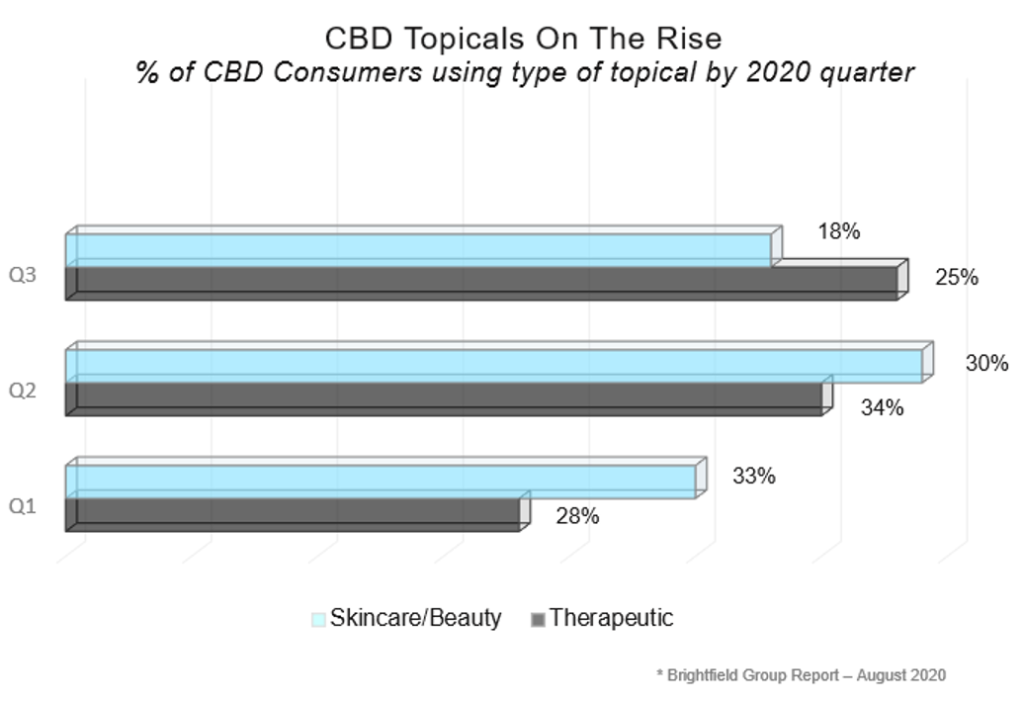
The shift online for skin care and CBD should be underscored as two of the major consumer themes and success stories of 2020. Multiple product routines researched and purchased online with recurring subscription delivery was accelerated, accepted and is expected to continue going forward. The skin care market, and in particular CBD-based skin care, stands at the nexus of many trends that have been accelerated by the Covid-19 pandemic and focus on self-care including whole body wellness, transparency, clean, sustainable, organic, online ordering/direct to consumer subscription, and indeed vanity. Structurally changing CBD-based products overall (+14%) and CBD-based skin care in particular (+17-30%) managed to grow during a year when many consumer categories experienced double digit percentage declines – they were deemed “essential”. Looking forward, expect the do-it-yourself digital ethos of the skin care consumer to remain intact and inure to the benefit of skin care lines and companies that embrace digital, transparency, and customization. The point and click, direct to consumer “Amazon Effect” marketplace has arrived and is positively affecting the Math of Beauty.
About Zilis’ Scientific Research & Development Department
Our Scientific Research and Development Department is headed up by Dr. Marielle Weintraub, a hemp industry expert. She holds a master’s and a PhD in Behavioral Neuroscience and is very active in many dietary supplement and hemp industry trade associations, including her role as the current President of the U.S. Hemp Authority. Dr. Weintraub is committed to the continued development of hemp-specific information and testing to fulfill the Zilis mission.
Science posts for Discover are co-researched and co-written by Kelly McGill, Senior Scientific Technical Writer at Zilis. Kelly holds a bachelor’s degree in English and a master’s in Linguistics / TESL. She has been writing science-related content for over 20 years and is an expert in making difficult concepts easy to understand.
Zilis is the creator of UltraCell™, a CBD oil product derived from hemp. Based in Argyle, Texas, a suburb of Dallas-Fort Worth, Zilis is privately held. Visit zilis.com for more information.
SHARE THIS POST
ABOUT THIS BLOG
Discover : The blog with the lifestyle, nutrition, science, and history of the hemp industry.
It’s your go-to for the most up-to-date information on hemp, CBD, dietary supplements, and more! Check it out!







